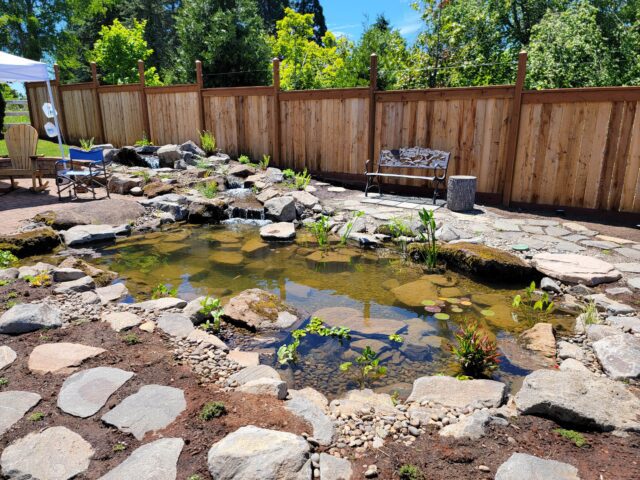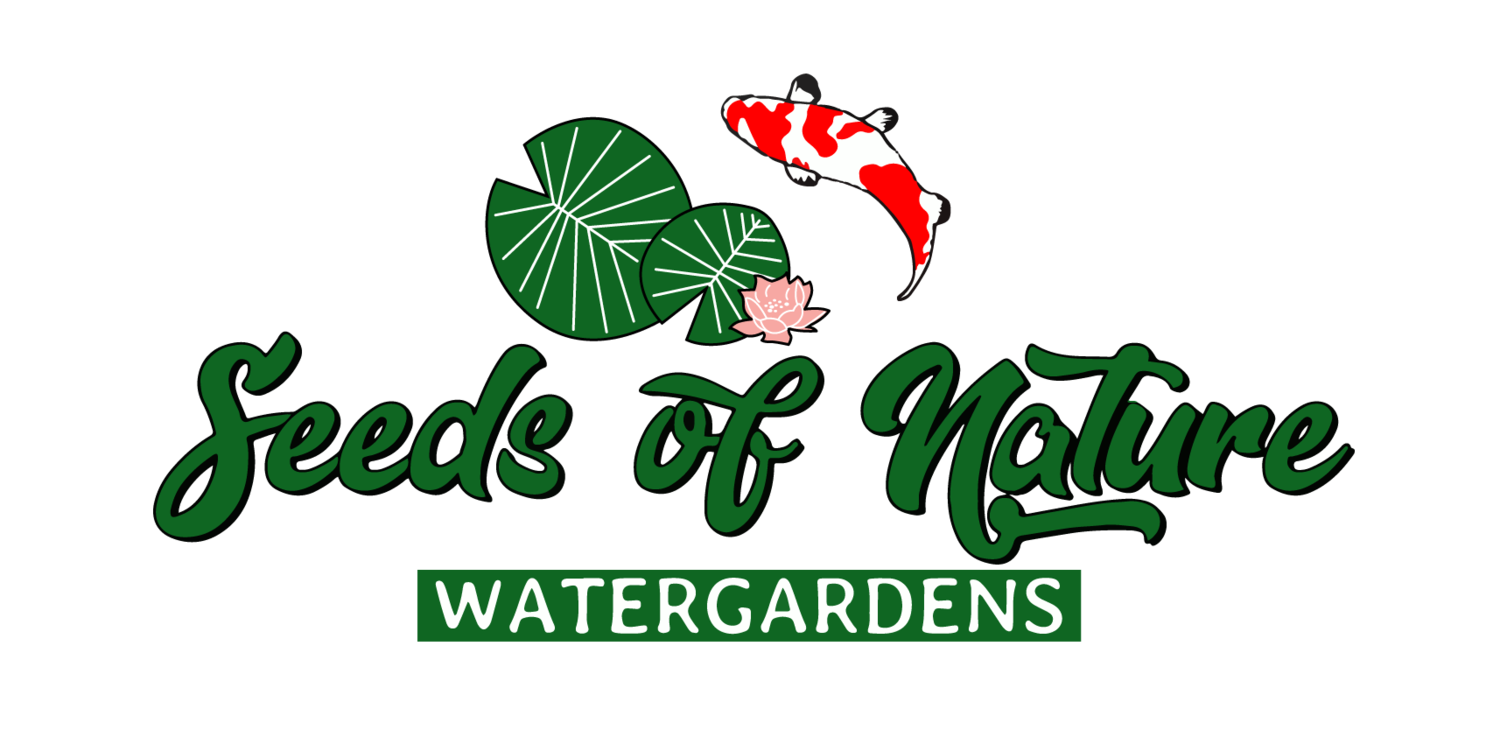Algae problems can be a common occurrence in ponds, but they don’t have to be a cause for concern. With the right steps, you can fix any algae issues and keep your pond looking its best. So here are a few pond maintenance tips.

Algae Treatment
If you are in Oregon, more specifically the Rogue Valley metropolitan area, and have a pond, you have more than likely experienced some sort of algal bloom due to our unique environment and climate. Do not fret, while it may seem harmful, this is not always the case. For sake of simplicity, we will break down the two most common forms of algae and steps to reduce it in your pond or watergarden.
Two Basic Types Of Algae:
Before moving any further, it is quite essential that you’re aware of the two basic types of algae. Pea-green water, which is common in new ponds, hence the name ‘new pond syndrome,’ is the result of a bloom of single-celled planktonic algae. This is made of many organisms that use photosynthesis to live and reproduce.
While not initially harmful, if left unchecked, this bloom can cause eutrophication (think red tides in Florida), where the algae essentially deplete all the available oxygen and suffocate the fish.
Filamentous algae are what we call string algae. This algae is another single-cell organism that links together to create long strands.
While not harmful, it can cause issues with mechanical components such as pumps and skimmers. It can also clog filtration and be plain disgusting.
Other Algae Types You Might Not Know
There are other types of ‘algae’ such as: cyanobacteria ‘blue-green algae,’ which is not an algae at all but a type of bacteria, Euglena ‘red algae,’ which is rare and typically controlled along with the major two I mentioned above before it spreads, and Diatoms, which I will likely discuss in another article because they are so absolutely amazing they need paragraphs and pages on their own.
But for the sake of solving your immediate problem, we will only be discussing green water and string algae. Now let’s get to the solution.
Filtration
Your pond is an ecosystem that depends on the nitrogen cycle. Basically, bacteria turns nutrients into nitrogen. Bacteria needs to live on surfaces, and biological filtration gives a place for that bacteria to colonize and do the work.
Lack of biological filtration will cause bloom after bloom. The surface area of your pond is not good enough for beneficial bacteria to process ammonia, nitrite, nitrates, and phosphates to keep your water clear.
I will cover biological filtration in another article. But this is where I start. You need biological filtration! We install aquascape biofalls because they are the best at what they do.
Aeration
Without aeration, the bacteria mentioned above can not reproduce and do their job. This is why we install waterfalls on every pond we build. There is a gas exchange at the top of the water column. Nitrogen goes out; oxygen comes in. The more surface agitation, the more possible oxygen comes into the pond. This also depends on the weather since warm water holds less oxygen. This is why algal blooms in the summer can be harder to control.
You can add aeration by adding air stones or a small fountain spitter easily to help with creating more surface agitation. Adding these agitators close to the skimmer intake will help to increase oxygen levels before the water is sent to the biological filtration, which feeds the bacteria and lets them filter more!
If you do not have a skimmer, then I recommend installing one. Not only to remove excess leaf debris from creating more nutrient problems, but also because they take the top level of the water, which has the most oxygen, and send it to your biological filter! Pumps that sit on the bottom of the pond send oxygen-deficient water to the filter starving the bacteria.
Beneficial Bacteria
Whenever we think of bacteria, we think of it in negative terms, however, there’re some that can be quite beneficial for your pond. You must add beneficial bacteria to your pond regularly. This must be done minimum weekly when the water temperature is above 50 F.
There are many types out there. We do this because these ‘cocktails’ are specifically designed with the bacteria we want that does the job we want. The bacteria treatments we use also have phosphate binders, barley extract, and a myriad of different treatments that are designed for ecosystem ponds.
Native bacteria does not do that great of a job. You must add bacteria! This will typically solve 3/4 of all pond owners problems since they are typically designed with biological and mechanical filtration in mind.
We have devices called autodosers that will add in the bacteria automatically so you don’t have to remember. All you have to do is change the bacteria bags occasionally.
Plants
When it comes to ponds, you have two choices. You can either grow algae, or you can grow pretty plants. Plants absorb nitrate and phosphates from the end process of the nitrogen cycle. The same nutrients that the algae needs to survive. We call this competitive exclusion. Plants are a must in our backyard ecosystems. They add natural beauty, give shade for the fish, and help filter the water.
If installing the plants yourself, make sure you remove any and all dirt and soil from the roots before installing directly into the gravel because that soil has fertilizers that will seed an algal bloom.
Fish
Yes, fish are an essential part of the ecosystem. But they can also disrupt it. Having too many fish can create too many nutrients, while not having enough will limit your plants growth. Overfeeding your fish can also be the cause of your algae blooms. Limiting your feeding to a couple times a week, and allowing the fish to nibble on the biofilm will help as well.
For 9/10 cases these steps and components to your pond will fix any algal problems you might have. Typically these solutions will take anywhere from 4-6 weeks to solve your algae problem, so do not expect immediate results. This is an ecosystem and needs adjustment depending on a few factors such as sunlight, runoff, and fish load.
I hope this article helped. Happy Ponding!
Bill Seeds
Seeds of Nature Watergardens
CONTACT US if you need additional help
